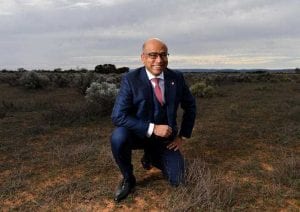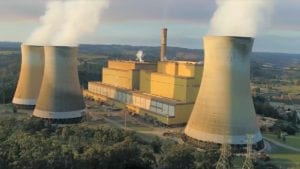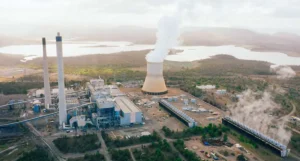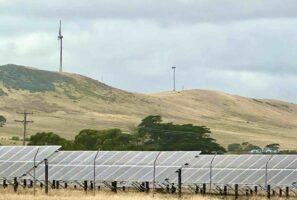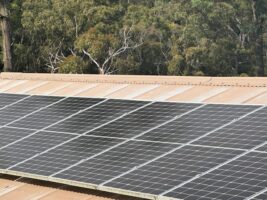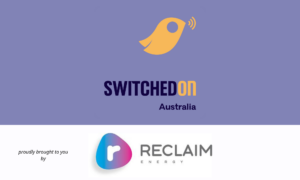It is a strange, interstitial time. We’re somewhere between the initial shock of change brought on by the pandemic (which is wearing off as segments of society slowly reactivate) and the new nervousness of whether our slow climb up out of the trough will trigger a second wave.
While we were feeling panic and anxiety during those early days back in late February and early March, fossil fuel advocates have been calmly and openly forming a plan to capture the process of economic recovery.
They have had a head start in shifting the agenda towards their interests. They are embedded so deep in Australia’s political and business environments that efforts to economically recover from the impacts of coronavirus have already taken a dark brown tinge.
Australia’s Covid-19 Commission is headed by Nev Power – a former mining executive who has been decidedly unsubtle about the direction he plans to take the recovery process. When asked specifically about climate change and renewable energy on ABC’s The Business, Power avoided any clear answer, reiterating concerns about “reliability” and low-cost energy. When asked what the lowest cost energy was, Power talked about gas.
It is already playing out in policy. 350 Australia has detailed a long list of fossil fuel and environmentally-damaging demands, also covered in RenewEconomy here. And as covered here, Power sits at the centre of a broad web of interests working very hard to make Australia’s recovery brown, and the drumbeat of demands has been getting louder and faster.
On a global scale, a new report released by Vivid Economics shows that this problem is truly a global one. Australia is not the worst, but it is pretty bad, and the country is “yet to take measure that ensure stimulus will not undermine the sustainability and resilience of [its economy]”.
The opportunity for Australia to become a global leader in green recovery is ripe – there’s plenty of empty space on the ‘green’ side of that chart. But what does leadership look like? And who’s leading the charge to make it happen?
What’s being done
It makes perfect sense that the most sensitive component of the corona recovery is also the most prevalent. Australia’s renewable sector has experienced a period of strong growth, but looking down the ‘pipeline’, it is clear that there has been something of a slowing down.
Most recently, the Reserve Bank of Australia highlighted that the number of projects committed dropped by half; suggesting a looming slow-down.
“A number of factors suggest that investment activity in renewable energy will decline over the next couple of years” @RBAInfo‘s March 2020 research note is full of detail about what’s going on in the industry in Aus: https://t.co/nt9GdT5Pck pic.twitter.com/zNhNiNAgrf
— Ketan Joshi (@KetanJ0) May 15, 2020
“We would see an end to big annual emissions reductions from the power sector, making it harder to achieve the 2030 emissions target”, the Australian National University’s Frank Jotzo told Guardian Australia, pinning the danger on low wholesale electricity prices and the likelihood of a recession.
But industries like manufacturing, energy efficiency, transport and agriculture all have huge decarbonisation opportunities, too. In fact, the push for a green recovery in Australia has been diverse:
The Australian Conservation Foundation’s ‘Rebuild, Recover, Renew’ report outlines the job-creating benefits of broad-ranging environmental protection and small-scale renewable energy programs – explicitly linking the recovery process to building resilience against future crises, while mitigating emissions.
The Grattan Institute released a report into the potential for Australia to manufacture ‘green steel’ and export it overseas, and that would “generate tens of thousands of jobs and an export market comparable to Australia’s coal industry”.
Chairman of the Australian Renewable Energy Agency, Martijn Wilder, wrote that “With our abundant sun, wind and land resources, we can feasibly produce vast amounts of green hydrogen”, arguing strongly for a renewables-led recovery.
The recent Stimulus Summit, co-hosted by the Smart Energy Council and RenewEconomy, detailed ten key mega-projects that could supercharge a renewables-led recovery.
The Australia Institute’s Centre for Future Work released a report showing that “some 80 to 90 percent of Australians support both the Australian manufacturing sector and a more assertive transition to renewable energy”
These efforts have been covered early and consistently by RenewEconomy, and there is increasingly widespread focus on this emerging battleground, even from international outlets.
There’s little doubt fossil fuel players assumed Covid-19 would be the perfect cover for the worsening of climate change and the profit that brings, but that is only true if it is allowed to be true.
These reports, plans, events, articles and investigations are revealing a single core truth: any recovery process that is low-emissions is also significantly better for jobs, for economics and for people. There is no reason Australia’s recovery shouldn’t already be changing colour. There’s a fight coming, and it’s going to be tough.

